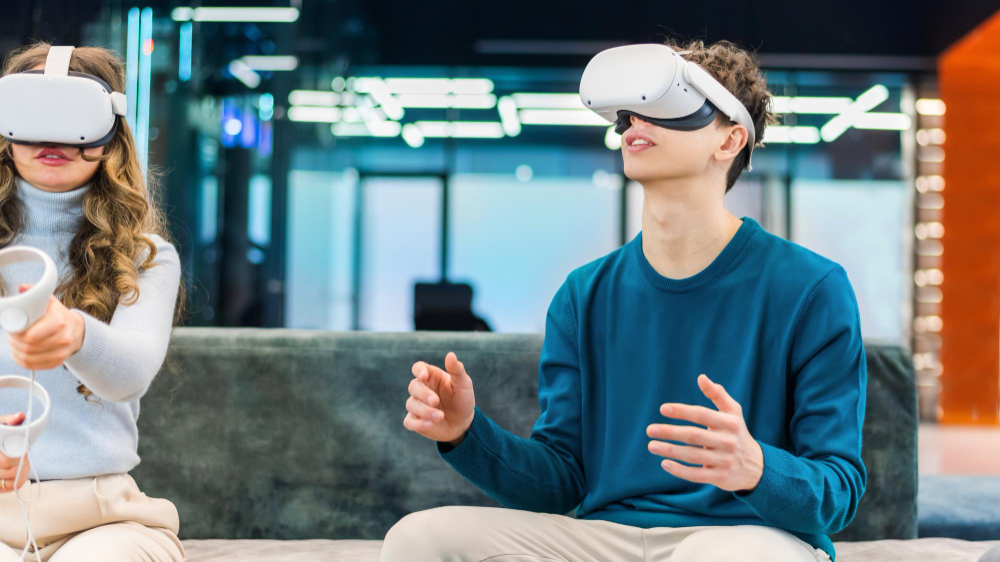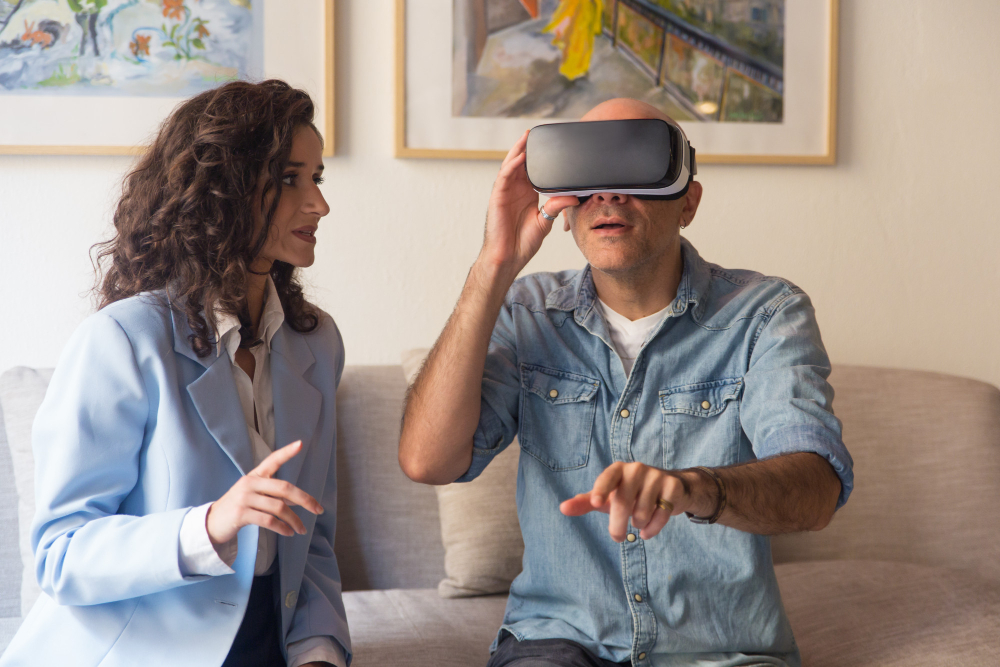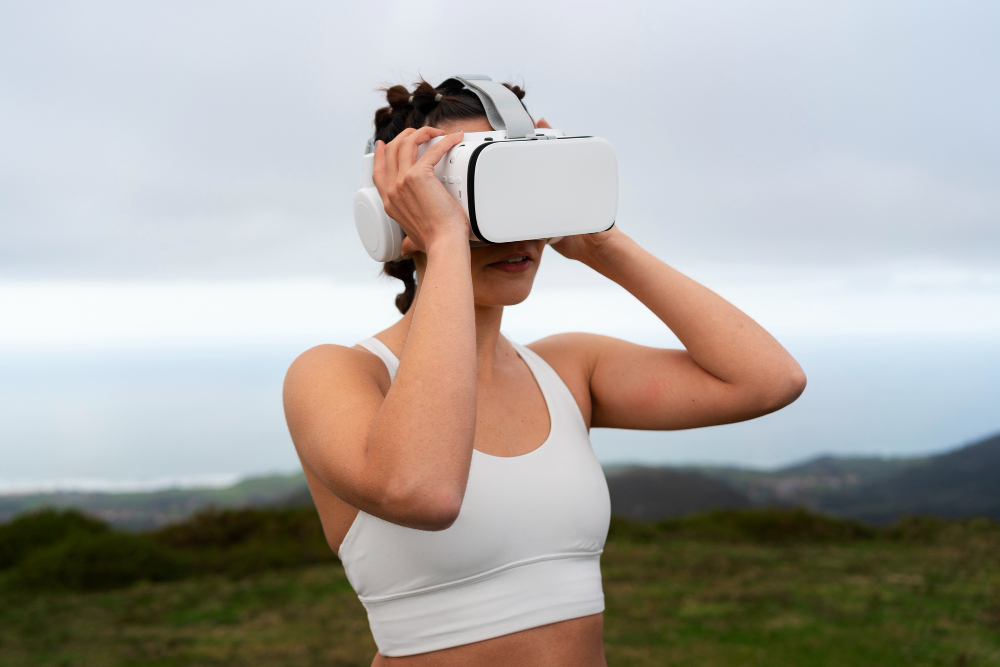
Students check their phones over 150 times a day. Not to study. Just… because. Now imagine if that same impulse—to glance at a device—could boost their learning instead of killing it.
That’s the promise wearable tech is making. Whether we’re talking about a high school student, a college learner, or a corporate trainee grinding through another online module—wearables are stepping into the education scene with bold claims: better focus, better engagement, better outcomes.
Let’s see what the buzz is about—and whether there’s actual substance behind it.
First—What Counts as Wearable Tech in Education?
Before we talk impact, let’s define the gear. Wearables in education go far beyond step counters. Here’s what’s currently showing up in classrooms and training rooms:
Smartwatches & Fitness Trackers

Used for tracking movement and managing attention cues. Wearable trackers help schools monitor physical activity, prompt movement during long study sessions, and even send reminders to stay hydrated. Some teachers report using them to support students with ADHD by setting vibration-based cues.
VR/AR Headsets

Immersive tech that lets students experience learning. Want to dissect a frog without the mess? Travel to ancient Egypt from a desk? That’s all possible now. In fact, an Australian startup, Mindflight7, uses VR to take students on sensory-rich virtual field trips.
Biosensors and EEG Headbands

These measure brainwave activity, giving real-time feedback on attention levels. Some corporate trainers in high-stress industries use Muse headbands to guide mindfulness sessions before complex modules, to improve information retention.
Smart Glasses / Haptic Devices

From simulating surgeries in med school to supporting students with visual impairments, these tools are redefining accessibility and experiential learning.
So yeah, we’re not in textbook-only territory anymore.
So… Does Wearables Improve Focus and Engagement?
This is where it gets interesting. Research shows that wearable tech can support better learning outcomes—when used right. The devil’s in the details. Let’s look at where wearable tech genuinely adds value.
Learning That Feels Like Living

Immersive tools like VR and AR allow students to actively participate in learning. According to Stanford’s Virtual Human Interaction Lab, students remember more from VR-based experiences than traditional classroom lectures.
It’s the difference between reading about a volcano and standing inside one (virtually, of course).
Real-Time Feedback = Self Awareness

Devices that track attention levels or physical cues help learners self-correct. A spike in heart rate might indicate stress, prompting a quick break or breathing exercise before burnout hits.
Wearables can even track emotional state. That’s useful for learners to recognize when they’re zoning out or feeling overwhelmed—and course correct before they fall behind.
Gamification of Goals

Wearables often include progress tracking and achievement badges—kind of like FitBits for learning. That adds motivation without needing a pep talk from the teacher every five minutes.
Mindfulness Made Practical

Mindfulness isn’t new, but wearables make it easier to stick with. Devices that guide short breathing exercises or track calm time are helping reduce classroom anxiety. A recent MDPI study confirms that mindfulness programs improve focus and behavior, especially when reinforced with biofeedback.
And Then… There Are the Speed Bumps

Let’s not pretend it’s all wins and glowing progress charts. Wearable tech in education has its issues—starting with the big one:
Privacy and Data Security
These devices collect biometric data. That’s sensitive. Who owns it? How long is it stored? A 2024 report by Common Sense Media flagged that many ed-tech platforms still lack transparent privacy policies.
Cost and Accessibility
Not every school—or home—can afford VR headsets or biosensors. This creates gaps in access and learning opportunities. Schools need to ask: is this tech creating equity or division?
Overstimulation and Distraction
Ironically, some educators report that smartwatches distract more than they help. Kids play games, check messages, or fiddle with settings mid-lesson. Wired recently highlighted how some schools are banning wearables for this very reason.
Teacher Training and Time
Cool tech is useless if teachers don’t know how to use it. Or worse—if it adds more to their already packed plates. According to EdTech Research Group, less than 30% of schools offering wearable tech provide dedicated training.
So… Is It Worth It?
So, back to the core question: Can wearable tech improve focus and engagement?
Yes. But only if schools and institutions are strategic. Throwing gadgets at a problem isn’t a solution. Thoughtful integration is key.
Here’s what decision-makers should be asking before jumping in:
- What specific problem is this solving?
- Is this tech accessible to all students?
- How will we know it’s actually working?
- Do we have a plan for training and support?
Start with small pilots. Talk to your teachers, not just your tech consultants. Focus on outcomes, not shiny gadgets.
A Quick Glimpse into Real Life
Picture this: A group of nursing students in Brazil using haptic gloves to “feel” pulse rhythms during virtual patient care training. Their exam pass rates jumped by 22% in just one semester Not because they studied harder—but because they practiced smarter. (Source: EduTech LatAm 2024 Report).
That’s the promise wearable tech is chasing.
Wearables aren’t the silver bullet for disengaged students—but they are powerful tools when used with purpose.
They can make learning active instead of passive. Personal instead of generic. And maybe—just maybe—more engaging than checking TikTok every ten minutes.
But only if we use them wisely.



